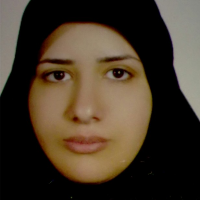Paleoenvironments of the upper part of the Shemshak Formation, based on Sporomorph EcoGroups and palynological elements, at Namin stratigraphic section, western Alborz
Author(s):
Article Type:
Research/Original Article (دارای رتبه معتبر)
Abstract:
AbstractIn order to reconstruct paleoenvironments of the Middle Jurassic Shemshak Formation, at the Namin stratigraphic section, northeastern Ardabil, western Alborz Mountains, the Sporomorph EcoGroups (SEGs) data and their associated plant communities, as well as dinoflagellate cysts, and palynological elements are employed herein. According to SporomorphEcoGroups, a high percentage of lowland plant population and a low percentage of coastal-tidal influenced and upland plant communities seem to suggest low sea-level and deposition in a shallow coastal or a marine-influenced delta. The main palynological elements occurring in the host strata are believed to reveal that the Shemshak sediments apparently accumulated in a relatively shallow, near-shore environment with low oxygen level or a marine-influenced delta. The presence in the material examined of such proximate dinoflagellates cysts as Dichadogonyaulax sellwoodii, Ctenidodinium spp., Valensiella ovulum, Pareodinia sp, Nannoceratopsis gracilis apparently supports this conclusion. Furthermore, the high ratio of warmer/cooler and low ratio of wetter/drier elements as well as the presence of warm to temperate index dinoflagellates cysts such as Ctenidodinium continuum and Pareodinia ceratophora suggests deposition of the host strata under a moist, ±warm climate during the accumulation of Shemshak sediments at the Namin stratigraphic section.Keywords: Palaeoenvironment, Shemshak Formation, Sporomorph EcoGroups (SEGs), Palynological elements, Western Alborz. IntroductionThe Shemshak Formation was defined by Assereto (1966), based on the type area around Shemshak, north of Tehran. This Formation is a thick siliciclastic succession, widely distributed across central and northern Iran, the so−called Iran Plate (Seyed−Emami 2003, Aghanabati 2004; Seyed−Emami et al. 2008; Fürsich et al. 2009).Generally, the Shemshak Formation rests unconformably on the Lower-Middle Triassic platform carbonates sediments of Elika Formation and in turn is followed by the basinal carbonates of Dalichai Formation.The age of the Shemshak Formation ranges from Late Triassic to Early Bajocian, and sedimentary environments comprise deep to shallow marine shelf, deltas, paralic swamps, lakes and meandering as well as braided rivers (Rad 1986; Shafiei 1991; Hosainpoor 2000; Hoseinzadeh 2003; Seyed-Emami 2003; Seyed-Emami et al. 2001, 2005, 2006, 2008; Fürsich et al. 2005, 2009; Mirbaggeri, 2007; Hakimi Tehrani 2008; Reza Zadeh 2008; Taheri Serish 2018).The purpose of this study was to determine the palaeoenvironmental interpretation of the Shemshak Formation based on inferred palaeoecological preferences of dinoflagellate cysts types, and quantitative analysis of the palynological elements and Sporomorph EcoGroups in the Shemshak Formation at the Namin stratigraphic section, western Alborz. Material & MethodsA total of 46 samples (from palynologically promising intervals within the Shemshak Formation) were prepared using standard processing procedures (e.g., Traverse 2007; Phipps and Playford 1984). Samples were treated by acids (10%—50% hydrochloric acid to dissolve carbonates and 40% hydrofluoric acid to remove silicates), followed by the application of hot 50% HCl to dissolve silica-gel formed during HF treatment. The residues were then further treated with saturated ZnCl2 for mineral separation. All residues were sieved through a 20μm mesh prior to making strew slides. Three slides of each preparation were examined by a transmitted light microscope. The slides were stored in the collection of the School of Geology, Tehran University, Iran. Discussion of Results & ConclusionsDiverse and moderately preserved palynofloras dominated by miospores, dinoflagellate cysts, acritarchs, fungal spores and foraminiferal test linings occur in surface samples of the Shemshak Formation in the Namin stratigraphic section, northwestern Iran.Sporomorph EcoGroups data and associated plant communities are considered as an available approach used to draw palaeoecological inferences for their host strata (Abbink 1998; Abbink et al.2004). This method was used for the Shemshak Formation in the Namin stratigraphic section. Miospores typifying all the six plant communities are retrieved from the material examined. The least and most abundant miospores taxa are those related to Pioneer and Lowland SEGs. Based on the SEG data from the Shemshak Formation's palynological assemblages, declination of miospores representing upland/lowland plant communities as well as proliferation of those characterizing Lowland/Coastal-Tidal plant associations is interpreted to signify relatively low sea-level and sedimentation in a marginal marine setting or a marine-influenced delta.Furthermore, such palynological evidence as high frequency of proximate dinocysts and prominent equidimensional opaque/blade-shaped opaque palynomacerals ratio in the samples examined suggest accumulation in a dysoxic shallow marginal marine or a sea-influenced delta depositional setting. Additionally, the notable phytoclasts/marine palynomorphs ratio and the relative abundance of transparent in relation to opaque amorphous organic matter (AOM) seem to support this generalization.
Language:
Persian
Published:
Stratigraphy and Sedimentology Researches, Volume:37 Issue: 4, 2021
Pages:
83 to 102
magiran.com/p2400055
دانلود و مطالعه متن این مقاله با یکی از روشهای زیر امکان پذیر است:
اشتراک شخصی
با عضویت و پرداخت آنلاین حق اشتراک یکساله به مبلغ 1,390,000ريال میتوانید 70 عنوان مطلب دانلود کنید!
اشتراک سازمانی
به کتابخانه دانشگاه یا محل کار خود پیشنهاد کنید تا اشتراک سازمانی این پایگاه را برای دسترسی نامحدود همه کاربران به متن مطالب تهیه نمایند!
توجه!
- حق عضویت دریافتی صرف حمایت از نشریات عضو و نگهداری، تکمیل و توسعه مگیران میشود.
- پرداخت حق اشتراک و دانلود مقالات اجازه بازنشر آن در سایر رسانههای چاپی و دیجیتال را به کاربر نمیدهد.
In order to view content subscription is required
Personal subscription
Subscribe magiran.com for 70 € euros via PayPal and download 70 articles during a year.
Organization subscription
Please contact us to subscribe your university or library for unlimited access!



